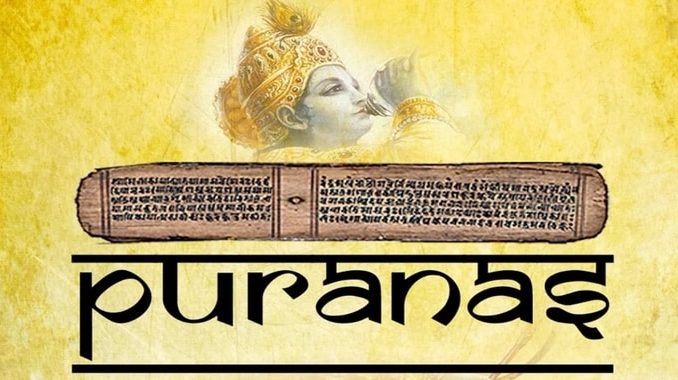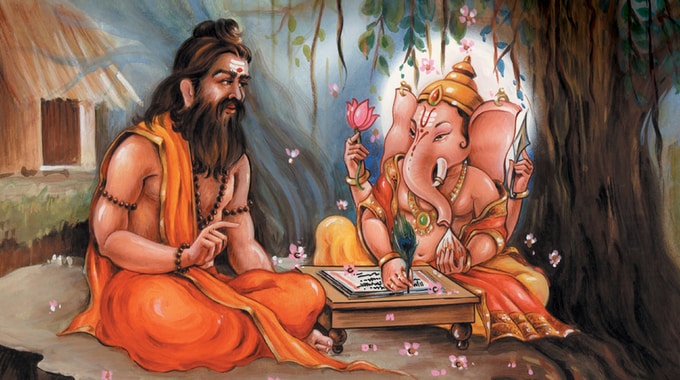
There is a lot of confusion about the Puranas and some people oppose it. In fact, many misconceptions were spread due to the word Myth in English and due to this word, there was a trend to consider Puranas as un-authentic. Read the entire Puranas and understand them without saying anything on it is not right. It is true that if the language changed with time, there would have been some changes in the Puranas.
18 is Purana : The number of Puranas is mainly stated as eighteen: – Vishnu, Padma, Brahma, Shiva, Bhagavata, Narada, Markandeya, Agni, Brahmavaivarta, Linga, Varaha, Skanda, Vamana, Kurma, Matsya, Garuda, Universe and Future .
Think of it like this
Brahma Purana, Padma Purana, Vishnu Purana, Shiva Purana (Vayu Purana), Bhagavata Purana, (Devi Bhagwat Purana), Narada Purana, Markandeya Purana, Agni Purana, Bhavishya Purana, Brahmavaivarta Purana, Linga Purana, Varaha Purana, Skanda Purana, Vamana Purana, Kurma Purana, Matsya Purana, Garuda Purana and Brahmanda Purana.
Types of Puranas Uppurana
Ganesh Purana, Narsingha Purana, Kalki Purana, Ekamra Purana, Kapil Purana, Dutt Purana, Srivishnudharmottara Purana, Mudgal Purana, Santkumar Purana, Shivdharma Purana, Acharya Purana, Manav Purana, Ushana Purana, Varuna Purana, Kalika Maheshwar Purana, Samb Purana, Saura Purana, Parashar Purana, Marich Purana and Bhargava Purana. Harivansh Purana, Saurapurana and Pragya Purana are also included.
10 special things from Puranas
1. Meaning of Purana : The word Purana is made up of a combination of the words ‘pura’ and ‘ana’. Pura means ‘old’ or ‘ancient’ and ana means to say or tell. Purana literally means ancient legend or old story. The history of ancient India is recorded in the Puranas.
2. Five characteristics of Purana: –
Sargashtha Pratsargastha Dynasty Manvantaraani Ch. Hereditary Chaiv Puranam Panchalakshanam ,Five characteristics of the Puranas are considered: 1. Sarg (creation), 2. Pratrisarga (holocaust, rebirth), 2. Dynasty (gods and sages lists), 3. Manvantara (period of fourteen Manu), and 5. Hereditary ( Surya Chandradi Dynasty Charit).
3. Smriti Granth Hai Purana: The Vedas are the only scriptures of Hindus, which have been called Shruti and Puranas are the history of ancient times of Hindus, which are called Smriti Granth. All the Puranas have not been written by Ved Vyasji, some Puranas have also been written by sages Parashar and other sages.

4. Bhavishya and Kalki Purana: There has been controversy in the Puranas of both the above from the medieval period. In the Bhavishya Purana, the kings of Kalikal refer to the Mauryan kings of Magadha and the kings of the Gupta dynasty, and as far back as the reign of Victoria is found, it proves that either their lineage was added to these Puranas or it Puranas must have been written in this period. Vishnu Purana also mentions the kings of Gupta dynasty under ‘Future Dynasty’.
Hindus have found a Brahmanda Purana on the Bali island near Java. The ancestors of these Hindus settled in the islands of the East in India in the fifth century BCE. There is no ‘Future Dynasty Case’ in the Baliwale Brahmadpuran, in which the name of Janamejaya’s great-grandson Adyasimakrishna is found. This proves that the lineage of later dynasties may have been added to the Vishnu Purana, but it has been decided that the rest of it is ancient, that is, from the Mahabharata period.
5. Oldest Puranas : Researchers consider Brahma Purana and Vishnu Purana, the oldest Puranas in Puranas because the five characteristics of Purana also fit on it. These Puranas are followed by Matsya Purana, Skanda and Varaha Purana. Then Shiva and Devi Bhagwat Purana. Some people say that Vayu Purana is the Shiv Purana.
6. Previously there was only one Maha Purana : In Matsyapurana it is clearly written that the first Purana was the same, from that there were 18 Puranas (53/4). It is written in Reva Mahatmya under Shivpuran that the speakers of eighteen Puranas are Matyavatisut Vyas.
It is written in the Brahmanda Purana that Ved Vyasa compiled a Puranasamhita. The next thing is known from Vishnu Purana. It says that Vyas had a disciple named Harshan who was of the Suti caste. Vyasji gave his Purana Samhita in his hands. There were six disciples of Rome Harshan – Sumati, Agnivarcha, Mitrayu, Shanshpayan, Akitavran and Savarni. Among these, Akrit-Vran, Savarni and Shanshapai made a code based on the Puranasamhita read from Rome Harshan. Just as Ved Vyasa collected mantras and divided them into codes, similarly Puranasamhita was compiled by collecting circles coming in the name of Purana. With the same Samhita, he made three more arms of the disciples of Sut. Eighteen Puranas would have been made on the basis of these codes.
However, it is a fact that the Puranas were composed in the Mahabharata period by Parashar Muni, his son Ved Vyas and his disciples Paal, Jaimin, Vaishampayan, Sumantamuni and Rome Harshan. After that, the tradition of the disciples kept the known Vedas and Puranas alive till the Buddhist period.
7. Shrimad Bhagwat Purana is the most publicized: Among the Puranas, Shrimad Bhagwat Purana is the most publicized because it gives a detailed description of the greatness of devotion and the leelas of Shri Krishna. It contains all the ancient themes within 12 wings.
8. The story of the Puranas is different, but the story is the same: Shaivite cults base Shiva, Vaishnava cults base Vishnu, Shaktas base power, monotheists base baseless God and Krishna devotees base Krishna. Creating the base expanded the origins, human history, tradition, religion and philosophy.
9. In the Puranas, along with history, many topics including Ayurveda, Yoga, culinary arts, grammar, rasa, dance, music, ornamentation, armaments, etc. are also described.
10. In Vishnu Purana, there is a story of all incarnations of Lord Vishnu, then in Shiva Purana, similar description of Shiva and his avatars will be found in Bhagwat Purana. In the Shrimad Bhagwat Purana, the description of the entire creation and his pastimes will be found on the basis of Sri Krishna itself. Similarly, the description of other Goddesses and Goddesses is found in other Puranas. Actually, this is the ancient history of India. There are talks of life, death, knowledge, salvation and goodwill in Garuda Purana, then the future talks about Bhavishya Purana. In the same way, the entire life of the Kalki avatar occurring in the Kalki Purana is written.
